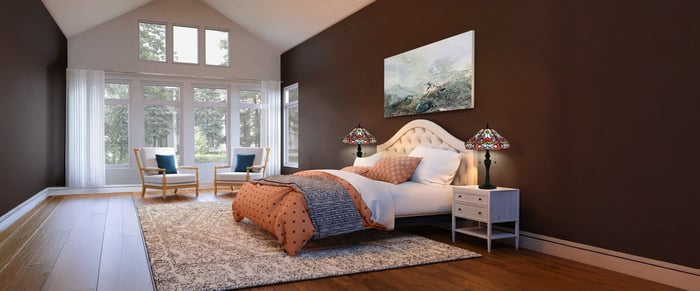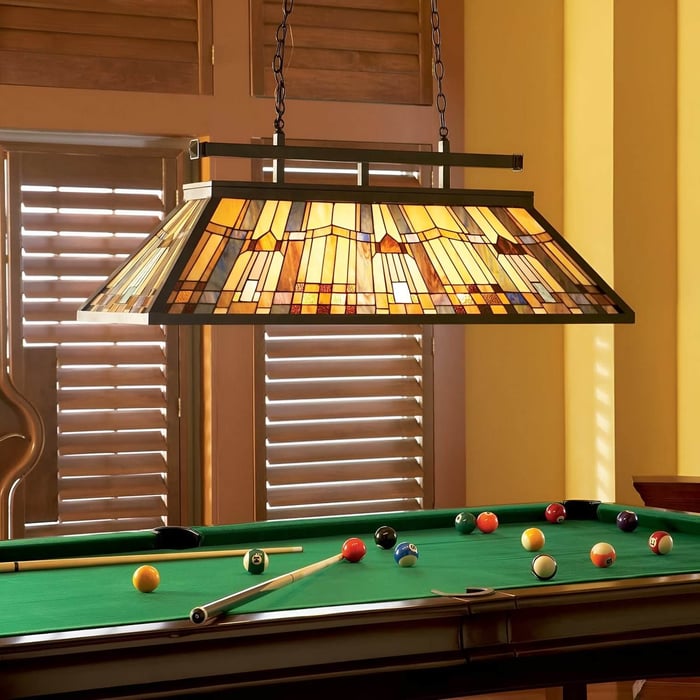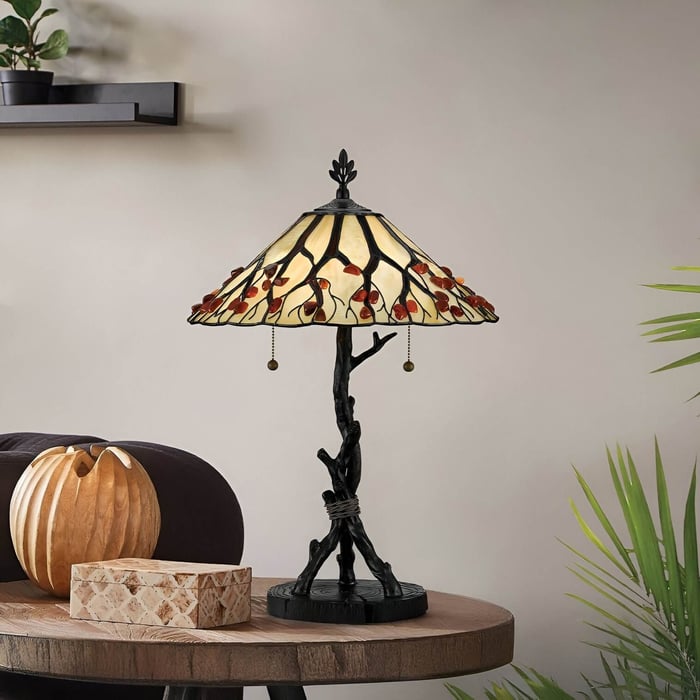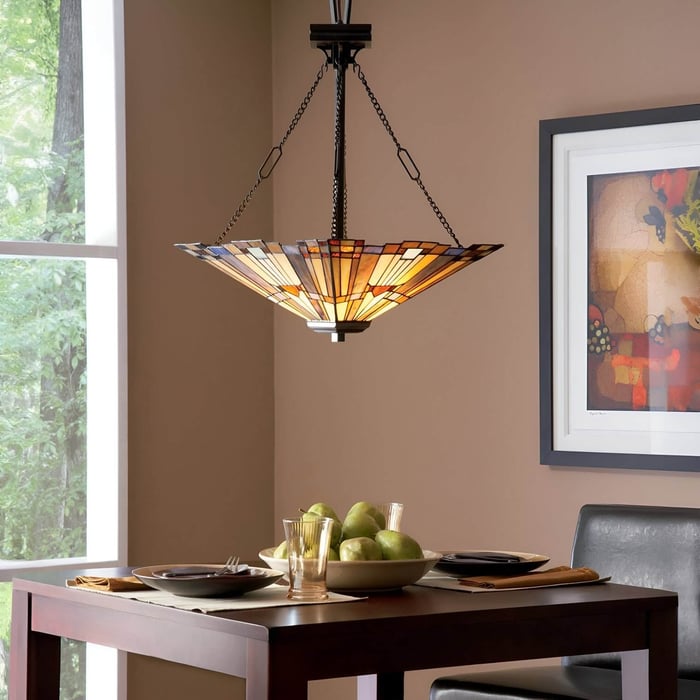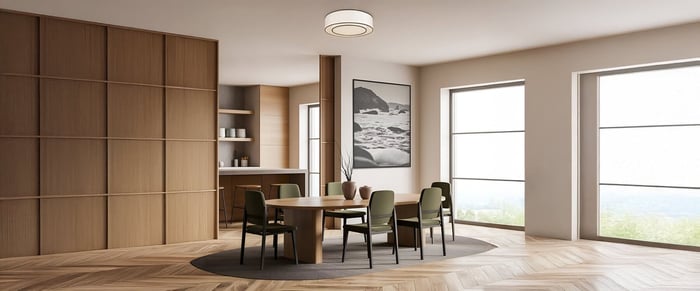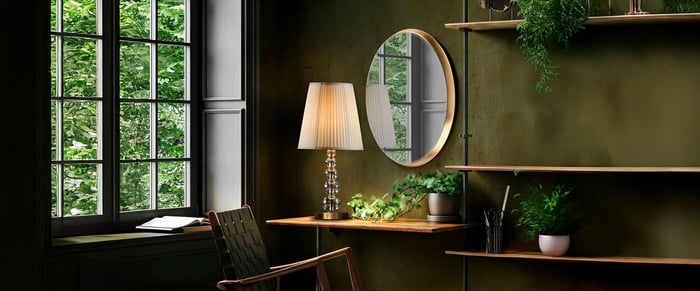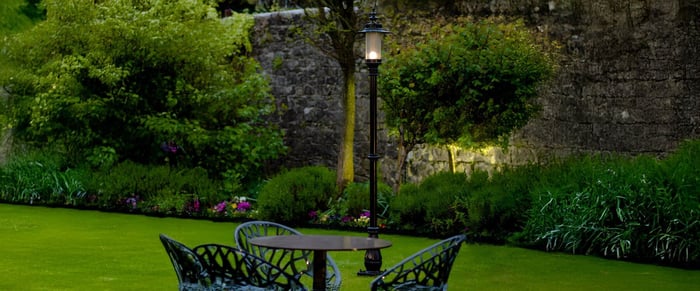Table of Contents
- Introduction
- Why Tiffany Lighting Still Belongs in Modern Interiors
- Pairing Tiffany Lamps with Clean-Lined Furniture
- Choosing the Right Tiffany Fixture for Modern Spaces
- Colour & Pattern Strategies for Balance
- Modern LED Guidance for Tiffany Lighting
- When to Let Tiffany Lighting Be the Star
- Classic Glass Meets Contemporary Style
- FAQs
Introduction
In today’s streamlined interiors matte finishes, clean lines, and minimalist palettes ornate stained glass can feel like a risky move. And yet Tiffany lighting continues to attract modern design lovers, thanks to its rich colour, craftsmanship, and timeless artistic glow. The real question isn’t whether Tiffany lamps can work in a modern home, but how to use them without throwing off the visual harmony.
The answer is yes with intention.
Many homeowners hesitate to use Tiffany lighting outside of vintage or traditional spaces. But with thoughtful placement, controlled colour choices, and balanced styling, these art-glass pieces add warmth, depth, and personality to contemporary rooms. In this guide, we’ll show you how to make Tiffany table lamps, Tiffany pendants, and Tiffany floor lamps feel completely at home in modern and transitional interiors.
Why Tiffany Lighting Still Belongs in Modern Interiors
The enduring appeal of Tiffany lighting is craftsmanship. Each fixture is built from individually cut stained-glass pieces, assembled by hand into patterns that cast a layered, glowing warmth. That texture contrasts beautifully with minimalist rooms which often benefit from one standout element that adds softness and character.
Tiffany glass works in contemporary spaces because it introduces:
Visual layering without clutter
A sculptural focal point that reads like functional art
Warm ambient glow that softens hard modern finishes
Used wisely, Tiffany lighting complements clean planes and open layouts instead of competing with them.
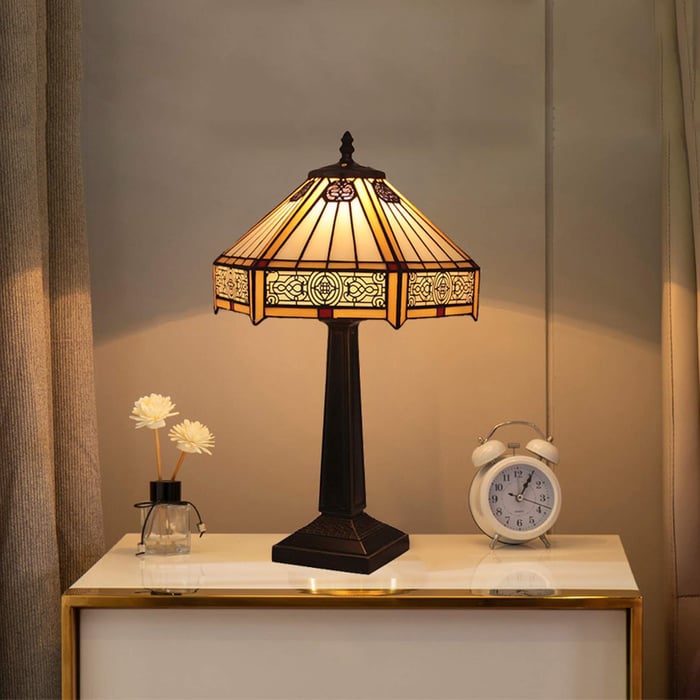
Pairing Tiffany Lamps with Clean-Lined Furniture
The enduring appeal of Tiffany lighting is craftsmanship. Each fixture is built from individually cut stained-glass pieces, assembled by hand into patterns that cast a layered, glowing warmth. That texture contrasts beautifully with minimalist rooms which often benefit from one standout element that adds softness and character.
Try these combinations:
A small Tiffany lamp on a matte-black console
Warm-toned glass on pale stone or oak cabinetry
A geometric Tiffany shade beside angular accent chairs
A floor lamp next to low-profile sofas or open shelving
To keep things contemporary, use modern materials as a foil:
brushed brass
matte ceramic
raw oak
powder-coated steel
concrete or plaster finishes
Geometric Tiffany patterns (chevrons, grids, stylised botanicals) pair especially well with Scandinavian, Japandi, and industrial interiors.
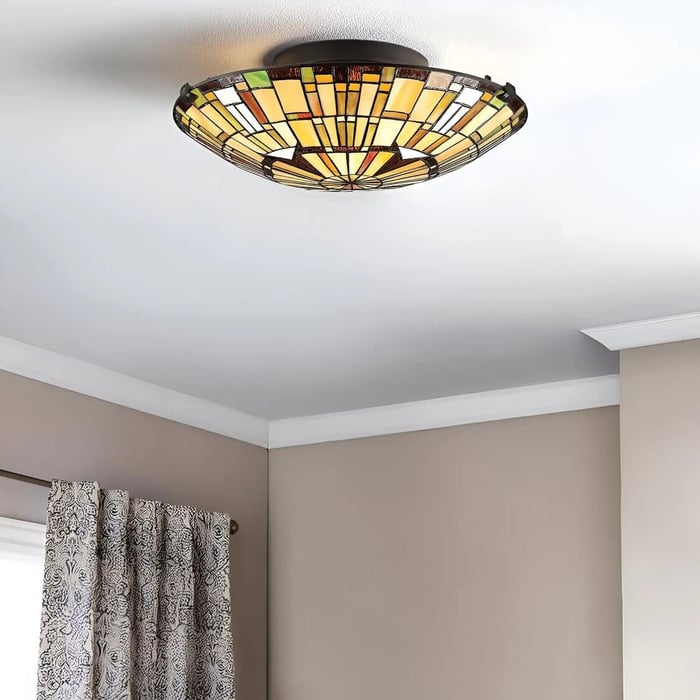
Choosing the Right Tiffany Fixture for Modern Spaces
Not all Tiffany lighting needs to be bold or heavily floral. In modern interiors, success comes down to function, scale, tone, and placement. Here’s how to select the right Tiffany piece based on function and spatial harmony:
Start with Function & Placement
Identify where the lighting is needed and how it should perform:
Ambient lighting for general illumination in living or open-plan spaces
Task lighting for worktops, desks, or dining surfaces
Accent lighting to create focal points in hallways or quiet corners
Once the function is clear, select a Tiffany fixture that balances well with the room’s size, purpose, and furnishings.
Ideal Tiffany Fixtures for Modern Interiors
Tiffany floor lamps
Best for: living rooms, reading corners, or loft-style layouts
Look for: slender silhouettes, architectural bases in bronze or matte black
Styling tip: Position beside clean-lined sofas or low-profile bookshelves for contrast and warmth
Tiffany pendants
Best for: kitchens, breakfast nooks, or dining zones
Look for: single domes or a series of slim pendants over islands or bar counters
Styling tip: Use to soften sharp edges in rooms with lots of metal or glass
Tiffany table lamps
Best for: entryways, home offices, or sideboards
Look for: scaled-down shades with restrained patterns
Styling tip: Place on minimalist consoles or oak cabinetry for a balanced blend of tradition and modernity
Semi-flush or flush ceiling fixtures
Best for: bedrooms, hallways, or compact ceiling heights
Look for: low-profile glass designs in soft colourways
Styling tip: Works well in transitional interiors where decorative restraint is key
Tone, Colour & Compatibility
To keep Tiffany lighting cohesive in contemporary homes, choose controlled palettes and simplified patterns.
Best colour directions for modern spaces
Stick to:
ivory / cream
slate
amber
sage
smoke
muted blues or greens
Best patterns
geometric mosaics
simplified botanicals
symmetrical repeats
linear motifs
Best finishes
matte bronze
aged black
brushed pewter
soft brass
These combinations integrate smoothly into minimalist, industrial, or Scandinavian spaces.
Colour & Pattern Strategies for Balance
When blending traditional and modern, restraint is your best tool.
Use Tiffany as the accent
Let one Tiffany piece introduce a colour note and echo it subtly:
pull green glass tones into olive cushions
repeat amber tones with brass hardware
mirror cream neutrals in rugs or textiles
Keep the rest of the palette quiet so the lamp reads as the focal point.
Avoid visual competition
Don’t scatter multiple Tiffany fixtures around a minimalist space.
Instead:
choose one hero piece per room
give it negative space
let the glass glow lead the styling
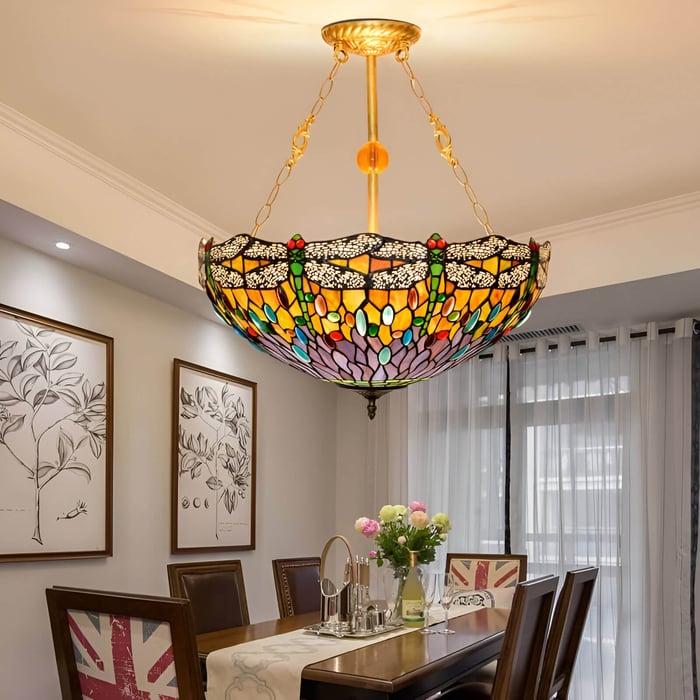
Modern LED Guidance for Tiffany Lighting
Most Tiffany fixtures today are fitted with LED bulbs and bulb quality heavily affects how the stained glass looks.
Colour temperature recommendations
2700K-3000K (warm white): best for living rooms, bedrooms, cozy ambiance
3000K (soft warm): great for dining/kitchens where you want warmth + clarity
2700K is slightly more amber-cozy; 3000K feels a touch cleaner but still warm.
Avoid very cool light (4000K) unless you want an intentionally crisp contrast; it can flatten the richness of stained glass.
LED quality checklist
Look for LEDs that are:
High CRI (90+) so glass colours stay vivid
Flicker-free for visual comfort
Dimmable + compatible if your fixture supports dimming
Frosted/opalescent to avoid hotspots through glass
Lower-quality LEDs can make Tiffany shades look dull or “plastic.” Great LEDs make them glow like art.

When to Let Tiffany Lighting Be the Star
Sometimes a modern room needs one dramatic anchor and Tiffany lighting can do that beautifully.
Great hero placements:
a bold Tiffany pendant above a minimalist oak dining table
a statement floor lamp in a white-walled loft
a richly coloured table lamp on a simple entry console
The surrounding simplicity creates the perfect frame. Don’t clutter around it use space to let the lamp breathe.
Classic Glass Meets Contemporary Style
Tiffany lighting may carry a sense of nostalgia, but that doesn’t limit where or how it can be used. In fact, its decorative nature can provide the very counterpoint modern interiors often lack: warmth, dimension, and individuality.
By choosing the right scale, finish, and placement, Tiffany lighting can seamlessly integrate into your contemporary home. Let it serve as a glowing contrast against clean lines, a visual softener in hard-edged rooms, or a handcrafted highlight in an otherwise minimal palette.
Ready to mix old and new?
Browse our curated collection of Tiffany pendants, Tiffany floor lamps, and Tiffany table lamps, at Niori, each one designed to pair classic artistry with modern-day appeal.
FAQs
Can Tiffany lighting work in a minimalist home?
Yes. Tiffany lighting can complement minimalist interiors when used as a focal point. Choose fixtures with muted glass tones and geometric patterns, and keep surrounding furnishings clean and restrained to let the piece shine without overwhelming the space.
What colours of Tiffany glass are best for modern interiors?
Neutral or subdued hues—such as ivory, slate, amber, moss, and smoke—work well in contemporary spaces. These tones allow Tiffany lamps or pendants to add warmth and character while blending with modern palettes and materials.
Where should I place Tiffany floor lamps in a modern space?
Tiffany floor lamps are ideal for reading corners, open-plan living areas, or beside minimalist accent chairs. Their height and glow create a vertical visual anchor and soften stark or angular furniture lines.
Can I use multiple Tiffany fixtures in the same room?
It’s possible, but restraint is key. In modern settings, it’s best to highlight one Tiffany lighting fixture—such as a pendant or floor lamp—as a statement piece. Overuse can clutter the room and dilute its impact.
Are Tiffany pendants suitable for modern kitchens?
Absolutely. Tiffany pendants above islands or breakfast bars add softness and texture to modern kitchens. Choose smaller-scale designs with simplified patterns or monochromatic tones to maintain visual balance.
